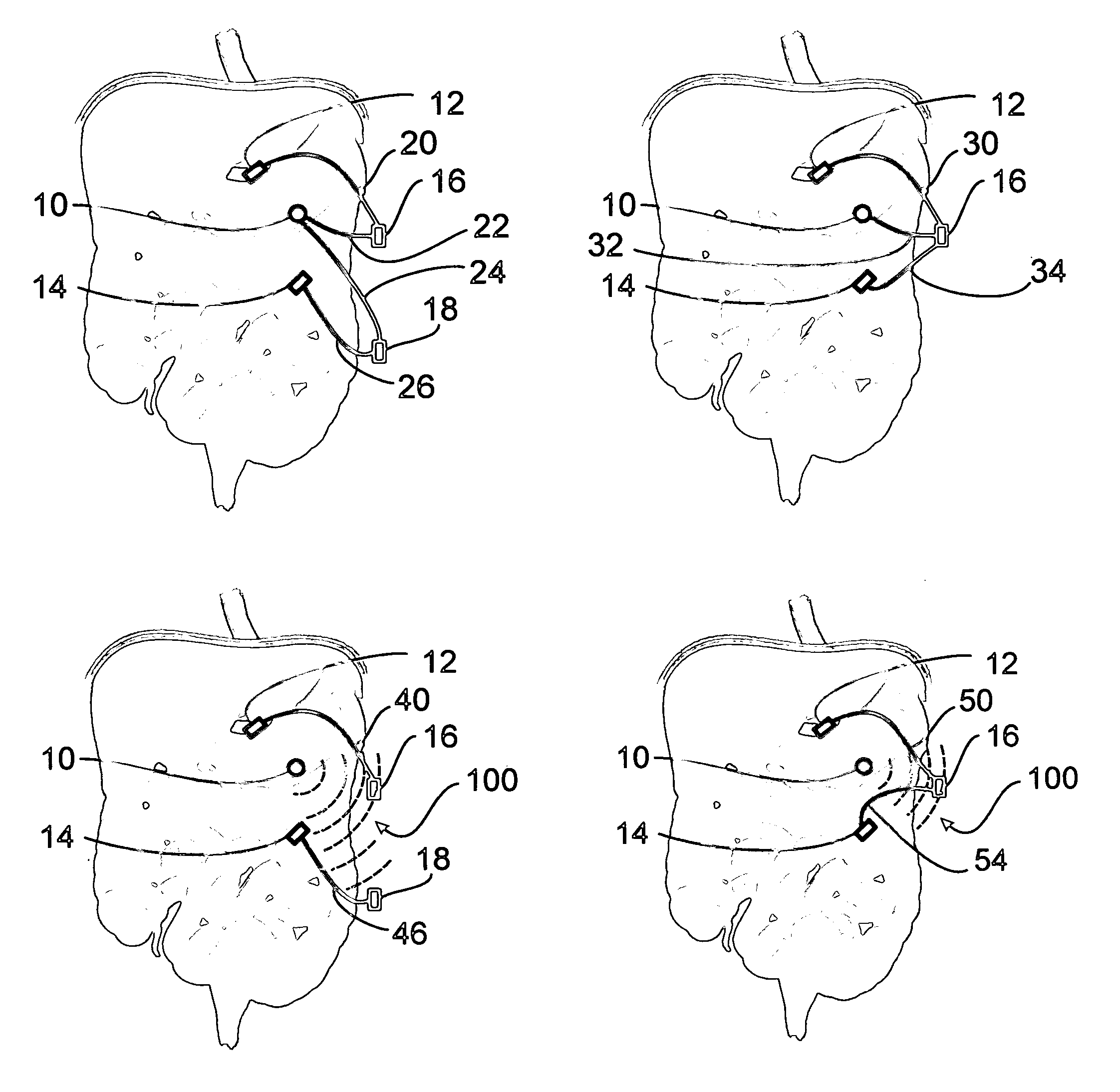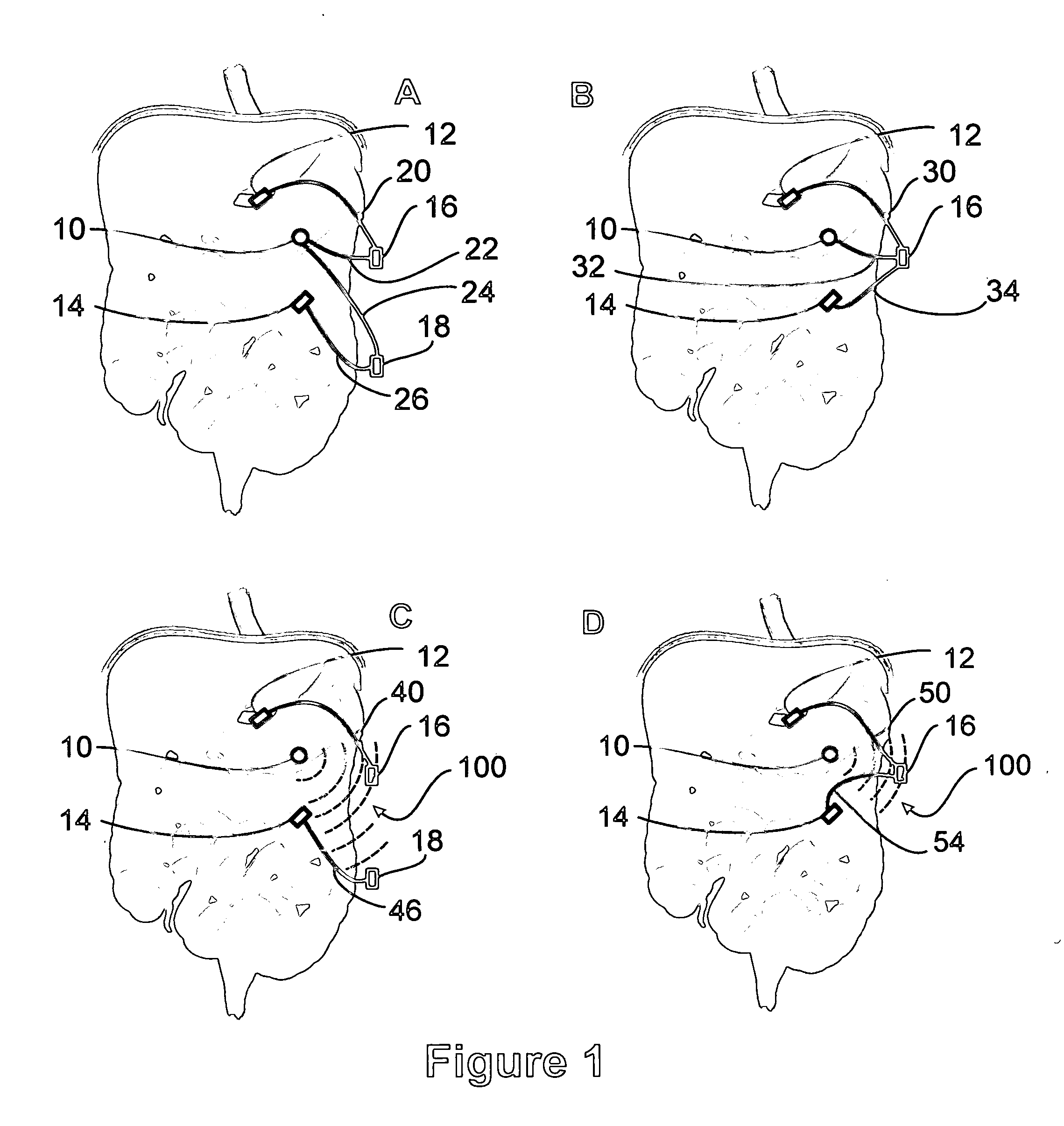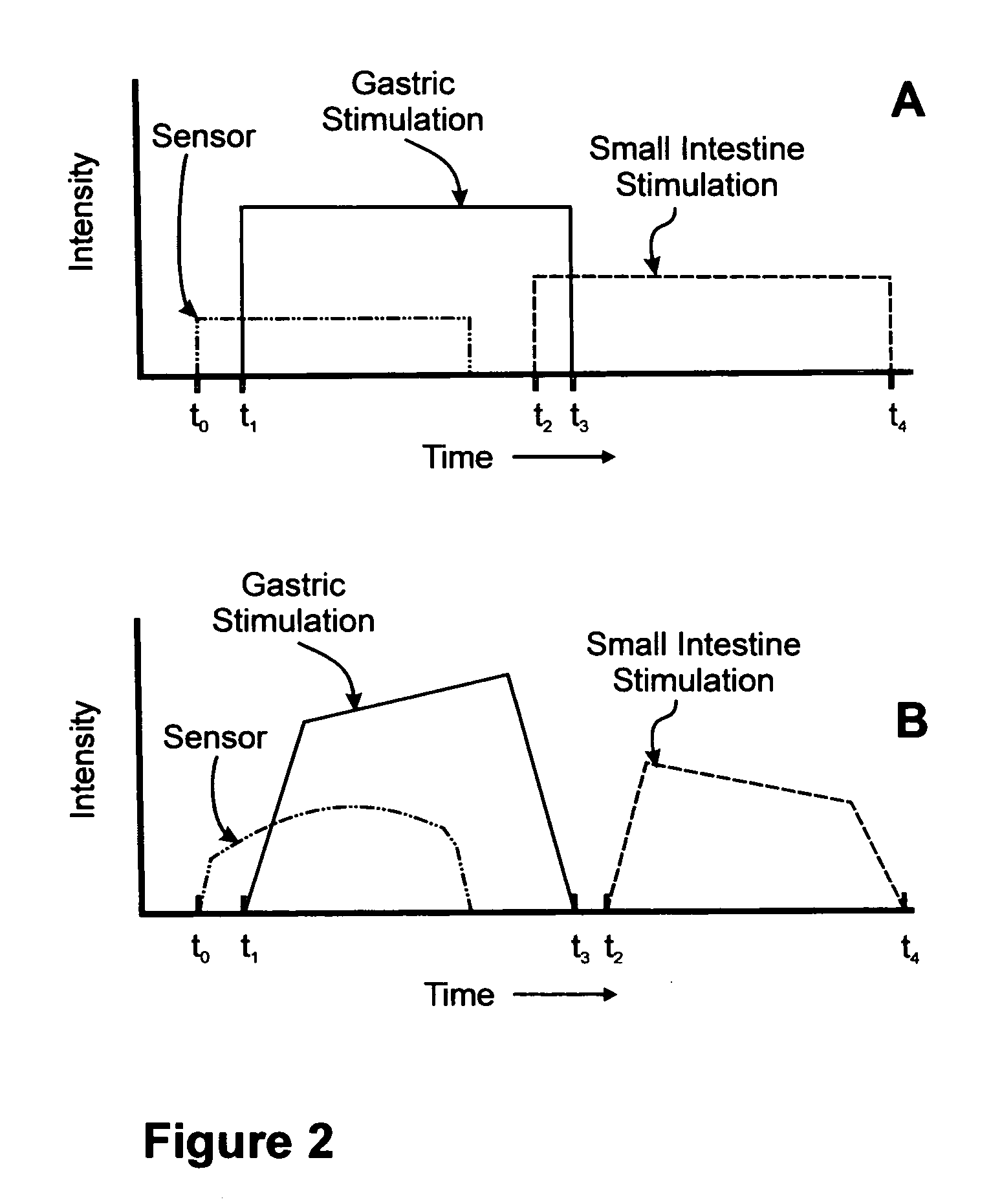Sensor based gastrointestinal electrical stimulation for the treatment of obesity or motility disorders
a gastrointestinal and sensor technology, applied in the field of obesity treatment, can solve the problems of significant slowed or stopped movement of food through the stomach, surgical treatment failure, and excessively high amount of body fat or adipose tissue in relation to lean body mass, and achieve the effect of optimizing longevity and efficacy of specific patient therapy, facilitating modification of stimulation periods, and increasing tolerance to therapy
- Summary
- Abstract
- Description
- Claims
- Application Information
AI Technical Summary
Benefits of technology
Problems solved by technology
Method used
Image
Examples
example 1
In a system comprising a sensor, a microprocessor, and one or more GESDs and / or IESDs, the following method of operation may be used:
[0064] read lead / tissue impedance; [0065] read baseline gastric activity and patient condition; [0066] direct electrical input; [0067] non-electrode sensor input; [0068] patient condition sensor input (time since last meal, activity); [0069] adjust amplifiers to minimum level (e.g., ⅓ scale); [0070] set initial stimulation parameters (high levels from look up table, constant stimulation string); [0071] deliver stimulation string; [0072] check sensor inputs for peristaltic response (e.g., greater than half scale, if saturated adjust amps); [0073] sample sensor for minimum period of time (e.g., 10 seconds) allowing contraction to propagate to the sensor location; [0074] no response, telemeter to physician to adjust; [0075] response, decrease parameters and repeat stimulation and check sensor inputs; [0076] repeat until peristaltic response is lost; [007...
example 2
[0084] Information obtained from the sensor can be used to determine the optimal period for therapy or the window of susceptibility. The following description provides one method to accomplish this: [0085] set stimulation parameters; [0086] allow device to determine a baseline zero-crossing level (i.e., this should correspond to the interval of the slow waves); [0087] device sets an initial stimulation interval / delay (minimum) from the zero-crossing; [0088] device senses the next zero-crossing and delivers an abbreviated electrical pulse train after the initial delay; [0089] device senses if a peristaltic contraction occurs; [0090] no peristaltic contraction, increase delay interval and repeat until contraction is achieved or stimulation interval corresponds to the length of a slow wave minus the minimum delay or until a second zero-crossing is sensed; [0091] peristaltic contraction, set delay; and [0092] periodically check stimulation synchronization and adjust, if necessary (progr...
PUM
 Login to View More
Login to View More Abstract
Description
Claims
Application Information
 Login to View More
Login to View More - R&D
- Intellectual Property
- Life Sciences
- Materials
- Tech Scout
- Unparalleled Data Quality
- Higher Quality Content
- 60% Fewer Hallucinations
Browse by: Latest US Patents, China's latest patents, Technical Efficacy Thesaurus, Application Domain, Technology Topic, Popular Technical Reports.
© 2025 PatSnap. All rights reserved.Legal|Privacy policy|Modern Slavery Act Transparency Statement|Sitemap|About US| Contact US: help@patsnap.com



